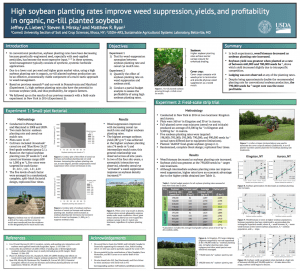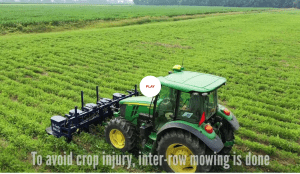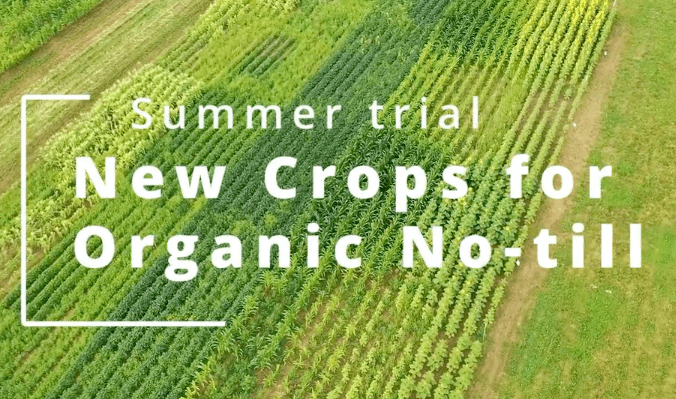What is Organic No-Till?
This practice entails planting a cash crop directly into a cover crop, relying on the cover crop mulch to suppress weeds and prepare a seedbed without tillage. With adequate biomass, this system can effectively suppress annual weeds for the duration of the growing season, and can have other benefits such as improved soil health and reduced risk of erosion. Cereal rye is the most common cover crop used in this system due to its winter hardiness, vigor and weed suppression. Soybean can be planted either into a standing cover crop before roll-crimping or after rolling in a one-pass operation. Especially when rolling before planting, a no-till planter with appropriate coulters and down-pressure is crucial to good soybean establishment and growth.
Organic No-till Soybean Production Guide
This guide aims to help farmers who are interested in using the rolled cover crop organic no-till soybean system. We start with an overview of soil health and organic management, and then outline the process of growing a cereal rye cover crop, terminating it with a roller-crimper, and no-till planting soybean into the residue. Despite clear benefits, this production system can be challenging, and further research and on-farm trials are still needed.
No-till Resources:
New Tools for Supplemental Weed Management in Organic No-till Soybean
New Cover Crop x Cash Crop Sequences for Organic No-Till
Comparing performance of alternative winter cereal cover crops to cereal rye in organic no-till systems
Effects of soybean and cereal rye seeding rates on organic no-till yield and weed suppression

Photo Gallery — snapshots of our research























